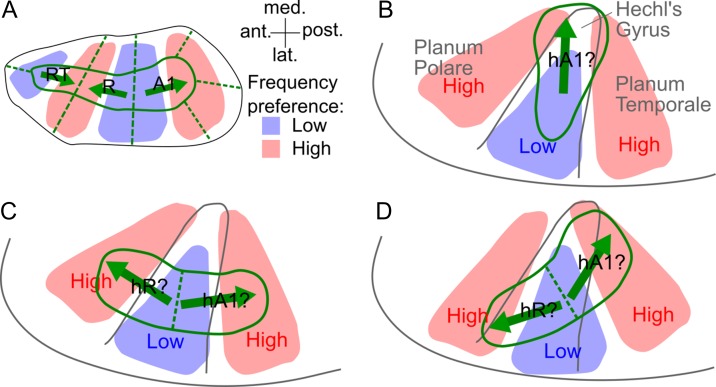Figure 1.
Models of monkey and human auditory cortex organization (on the left supratemporal plane). (A) Layout of the 3 core areas (A1, R, RT) and surrounding belt areas in the macaque auditory cortex according to Kaas and Hackett (2000). The solid green lines indicate borders between core and belt areas, and the dashed lines, borders within the core or belt. The blue and red shading shows regions responsive to lower and higher frequencies, respectively, and the green arrows show the directions of the connecting tonotopic gradients. (B) “Mediolateral” model of the human core based on postmortem anatomical results with presumed human homolog of macaque area A1 (hA1). (C) “Anteroposterior” model based on recent fMRI studies of human tonotopy with presumed human homologs of monkey core areas A1 and R (hA1, hR). (D) “Oblique” model intended to reconcile the mediolateral and anteroposterior models (Baumann et al. 2013).

